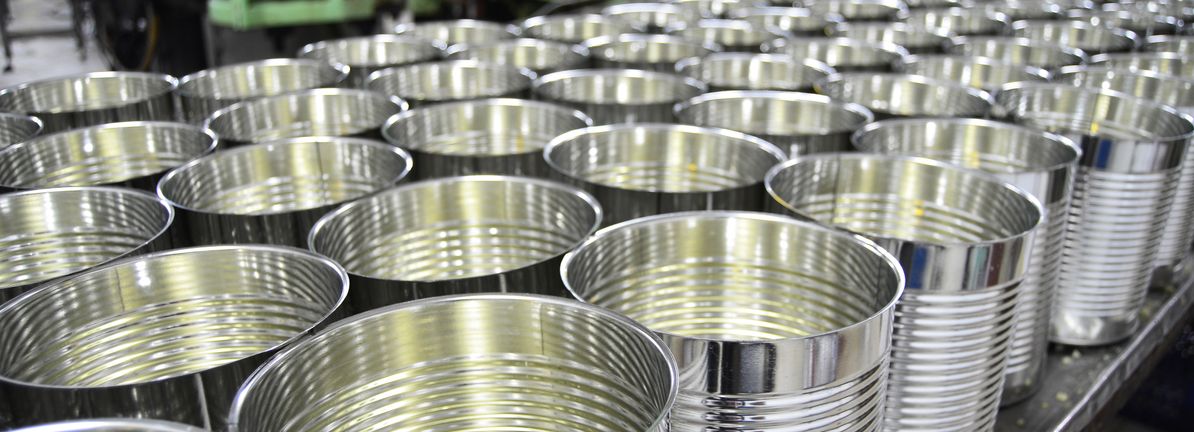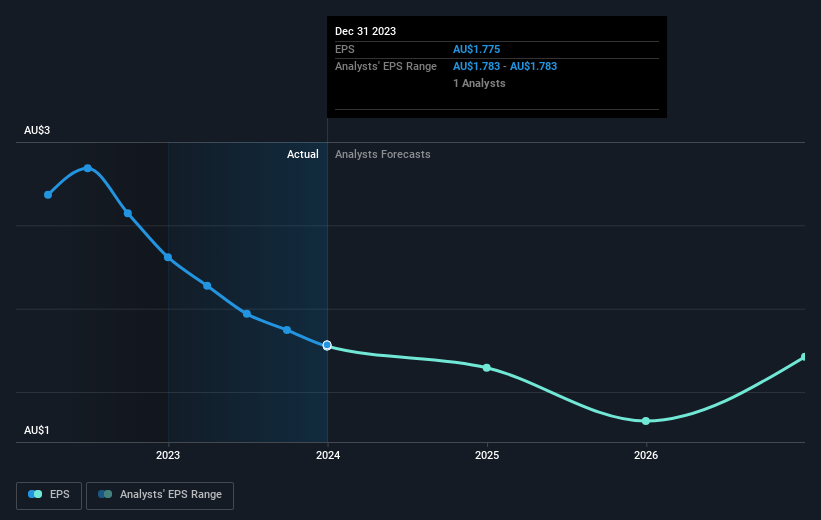The most you can lose on any stock (assuming you don’t use leverage) is 100% of your money. But on the bright side, you can make far more than 100% on a really good stock. For example, the Capral Limited (ASX:CAA) share price has soared 162% in the last half decade. Most would be very happy with that. Meanwhile the share price is 1.5% higher than it was a week ago.
So let’s assess the underlying fundamentals over the last 5 years and see if they’ve moved in lock-step with shareholder returns.
See our latest analysis for Capral
While markets are a powerful pricing mechanism, share prices reflect investor sentiment, not just underlying business performance. One imperfect but simple way to consider how the market perception of a company has shifted is to compare the change in the earnings per share (EPS) with the share price movement.
Over half a decade, Capral managed to grow its earnings per share at 35% a year. The EPS growth is more impressive than the yearly share price gain of 21% over the same period. So it seems the market isn’t so enthusiastic about the stock these days. This cautious sentiment is reflected in its (fairly low) P/E ratio of 5.44.
The graphic below depicts how EPS has changed over time (unveil the exact values by clicking on the image).
This free interactive report on Capral’s earnings, revenue and cash flow is a great place to start, if you want to investigate the stock further.
What About Dividends?
When looking at investment returns, it is important to consider the difference between total shareholder return (TSR) and share price return. Whereas the share price return only reflects the change in the share price, the TSR includes the value of dividends (assuming they were reinvested) and the benefit of any discounted capital raising or spin-off. So for companies that pay a generous dividend, the TSR is often a lot higher than the share price return. We note that for Capral the TSR over the last 5 years was 266%, which is better than the share price return mentioned above. This is largely a result of its dividend payments!
A Different Perspective
It’s good to see that Capral has rewarded shareholders with a total shareholder return of 42% in the last twelve months. Of course, that includes the dividend. That gain is better than the annual TSR over five years, which is 30%. Therefore it seems like sentiment around the company has been positive lately. In the best case scenario, this may hint at some real business momentum, implying that now could be a great time to delve deeper. It’s always interesting to track share price performance over the longer term. But to understand Capral better, we need to consider many other factors. For example, we’ve discovered 2 warning signs for Capral (1 doesn’t sit too well with us!) that you should be aware of before investing here.
If you would prefer to check out another company — one with potentially superior financials — then do not miss this free list of companies that have proven they can grow earnings.
Please note, the market returns quoted in this article reflect the market weighted average returns of stocks that currently trade on Australian exchanges.
Have feedback on this article? Concerned about the content? Get in touch with us directly. Alternatively, email editorial-team (at) simplywallst.com.
This article by Simply Wall St is general in nature. We provide commentary based on historical data and analyst forecasts only using an unbiased methodology and our articles are not intended to be financial advice. It does not constitute a recommendation to buy or sell any stock, and does not take account of your objectives, or your financial situation. We aim to bring you long-term focused analysis driven by fundamental data. Note that our analysis may not factor in the latest price-sensitive company announcements or qualitative material. Simply Wall St has no position in any stocks mentioned.








